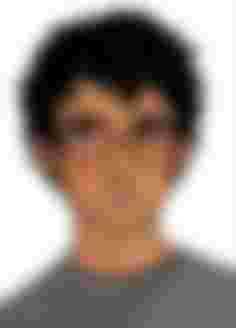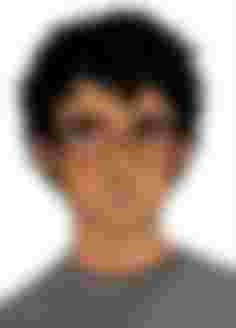The Making of a Powerful Character Arc.
Every story is made up of events as well as characters. A story occurs when a pattern is broken. If you're writing about an ordinary day, it's most probable a regular, not a story. You'll see how narrative structure, new stories, and background can all contribute to a good plot in the examples below. Follow the given steps to improve ones writing abilities and your ability to plot a good story.
What Exactly Is a Story Plot?
What occurs in a story is referred to as the plot. A plot, on the other hand, is more than just a series of events. A strong plot is focused on one moment—a break in a pattern, a defining moment, or an activity elevates a dramatic question that must be answered all through the story. Every story is made up of events as well as characters. A story occurs when a pattern is broken. If you're writing about an ordinary day, it's most probable a regular, not a story.
You'll see how narrative structure, new stories, and background can all contribute to a good plot in the examples below. Follow the given steps to improve ones writing abilities and your ability to plot a good story.

Plots are classified into seven types.
The essence of the dramatic topic influences the plot and the type of story that will be told. Seems to be something internally or externally threatening the characters? What style will the story fall under?
1. Tragedy; In a tragedy, the main character's fortunes should change dramatically — most often from negative to positive, happy to sad. Characters in tragedies must suffer.
2. Comedy; Even if your characters have flaws in comedy, those flaws should never be painful or destructive. Comic book characters come out unscathed.
3. The Hero's Journey; The hero of a narrative must go through two stages in a "hero's journey": acceptance and realignment of a situation. Something from the outside must occur that motivates the hero in a manner that he or she was unaware of previously. Then he must go on a pursuit to solve the problem.
4. From Rags to Riches; Do you remember Cinderella? The quintessential fairy tale continues to follow a simple rags-to-riches storyline: the protagonist is oppressed, impoverished, or is otherwise struggling, and achieves success through a series of events — either magical, as in Harry Potter, or even more realistic, as in High Hopes. This form of plot frequently has a happy ending.
5. Rebirth; The rebirth plot style depicts a character's change from good to bad. The character will almost always have a troubled history that notifies their current negative outlook on life; nevertheless, a sequence of events (generally put into motion by the main character or writer) will assist them see the light. Scrooge in A Christmas Carol or the Beast in Beauty and the Beast are two examples.
6. Defeating the Monster;
This type of story, also recognized as the evil versus good plot, showcases a protagonist (good) battling an antagonist (evil) (evil). The main character can be a specific character or a band of people working together to achieve a common goal. The antagonist is typically a big, bad evil (such as Darth Vader in Star Wars) who constantly throws roadblocks in the protagonist's path until the final showdown.
7. The Journey and the Return; This is a straightforward point A-to-B-to-A plot. The protagonist embarks on an adventure, to only come back to his or her starting point with new experience and knowledge (and sometimes treasure too). The Alchemist by Paulo Coelho is a well-known modern example of this plot.
Three-Act Structure: How to Outline a Story Plot
Plot structure is divided into three sections: start, middle, and end. Each section serves a distinct purpose and presents its own set of challenges. In Poetics, Aristotle was the first to develop this now-famous formula. "The whole is that which has a beginning, a middle, and an end," he defined it.
In plenty of other words, your reader should be able to view your narrative without being sidetracked by questions such as what did happen before the story began, what occurred after it is over, or how the protagonists got from the start to the finish. Aristotle's Poetics, according to acclaimed playwrights Aaron Sorkin and David Mamet, is the primary source of guidance to writing good storylines.
1. Beginning.
The first chapter of your novel must accomplish a lot. This must introduce the protagonist, the villain, the story's world, as well as the dramatic ask, and it must do so with enough vigor to pique your reader's interest right away. A opening chapter can be helpful in capturing the reader's attention.
2. Middle.
During in the center of the story arc, your mission is to make the hero's quest as hard as possible, so that the hero's victory seems less likely at every turn. You should raise the stakes along the way by creating ever-increasingly difficult obstacles while remaining focused on your goal. The various plot points could include the basic storyline as well as various subplots. A story's main plot must always start building up to the resolve.
3. End.
The conclusion of your story responses the dramatic topic, which already contains your ending. For example, if you ask, "Will Ahab catch the whale?" Then the conclusion of your story will become the moment he does. Because tension fades in the center of a novel, it's an important to write the ending first. It may not be perfect, so you can invariably change it later, but knowing where your characters are heading is helpful. Having a destination in mind will help you focus during the "middle muddle."
What Exactly Is Freytag's Pyramid
Gustav Freytag, a German novelist, expanded on Aristotle's notion of storyline by adding two new elements to the start, center, and finish: sequence of events and falling action. Freytag's dramatic arc, as well known as Freytag's Pyramid, consists of the following elements:
Exposition; This is the start of the story
Increased activity; Once a story has started, it is critical to build suspense by upping the ante. You must up the stakes all along way and create ever-increasingly difficult obstacles while remaining focused on your goal.
The climax (middle); Your plot's pinnacle.
Falling action; The falling action takes place after the climactic but before the conclusion. Ending commonly depicts the main character dealing with the aftermath or consequences of the climax. When the main character ties up the loose ends and moves toward the conclusion, this is referred to as the falling action. It is also known as the denouement.
Resolution; This concludes the story.
9 Methods to Raise the Bar in Your Story
What ever the scenario your hero is in at the beginning of the center portion should deteriorate. If the story on its own falters, keep in mind that the stakes for your protagonist must “ on ” position. Put obstacles in their way, even if you're not sure how they'll overcome them. Forcing your protagonists into a corner can sometimes help you improve your problem-solving skills.
Create a physical threat.
Add secondary characters to the story to add new tensions.
Create new problems.
Provide a character with a complicated backstory or situation.
Create roadblocks for your hero.
Make things complicated.
Tell the audience of the importance of the situation.
Figure out how to keep your main character shifting from one place to the next.
Include time constraints, such as a ticking time bomb.
Writing Workouts to Help You Develop a Good Story Plot
Now that you've mastered the plot elements, try your luck at composing your own story using the following exercise. Make a note of the following in a notebook:
Ten events that could inspire a story. They shouldn't have to be big: they might be events that took place to you or anyone else who you know, or they could be things you read about from the news.
Ten distinct characters These could be characters you've already started working with, people you've seen but never been there, or historical figures who pique your interest
Ten classic stories: folk stories, fairy tales, mythologies, or perhaps family stories passed down through generations. There is no need to go into detail; start listing a few phrases that summarize the story.
Now, start a new short story with one object in each list—one event, main character, one and established story shell. What occurs when you insert a protagonist of your own creation into an ancient folktale? What does your personal occurrence allow you to experiment with the fundamental folktale?

Very informative article! I didn't knew some these things and thank you for sharing it to us. Hereos journey and comedy are one of my biased.